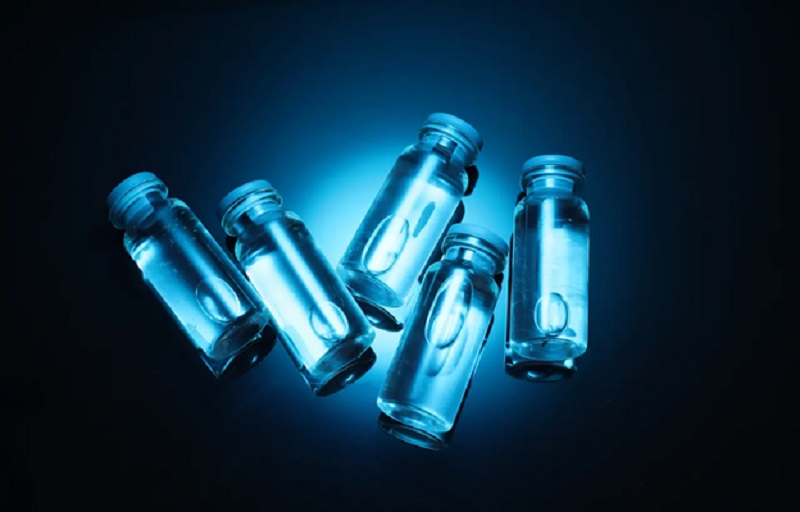
A reliable peptide supplier will focus on transparency, independent lab testing, and strict manufacturing standards such as GMP compliance. Trusted vendors provide Certificates of Analysis (COAs) showing purity levels above 99{302672462803f4a794cd012fb7d5906facc3689117a03c898d4af476f63e6951}, supported by detailed lab results like HPLC and Mass Spectrometry. Packaging should be tamper-proof, clearly labeled with batch numbers, and include expiry dates. Extra caution is needed with unusually low prices or incomplete vendor information, as these are often signs of counterfeit or low-quality products. Understanding how to spot red flags and make informed choices is key to ensuring safe and reliable peptide purchases.
Recognizing Trusted Peptide Suppliers
When searching for trustworthy peptide suppliers, it’s important to examine their transparency and commitment to quality. Reputable suppliers provide independent third-party test results, including HPLC and Mass Spectrometry analyses, to verify the purity and authenticity of their products. These companies follow strict quality control standards and disclose detailed information about their sourcing and manufacturing processes. They also supply comprehensive, batch-specific Certificates of Analysis (COAs) that confirm compliance with GMP requirements. Be cautious of vendors that offer vague product details, significantly lower prices, or lack verifiable contact information, as these may indicate poor-quality or counterfeit products. Understanding these warning signs helps ensure that you purchase peptides from sources that prioritize safety, transparency, and quality assurance.
Key Characteristics of Premium Peptides
High-quality peptides are defined by their high purity and effectiveness, typically exceeding 99{302672462803f4a794cd012fb7d5906facc3689117a03c898d4af476f63e6951}, to ensure both safety and performance. Transparent production methods and detailed third-party testing data, such as HPLC and Mass Spectrometry reports, are essential indicators of a product’s integrity. Additionally, proper storage conditions are necessary to maintain the stability and quality of peptides over time, preventing degradation and loss of potency.
Purity and Potency Standards
Achieving high purity and potency requires rigorous quality control and testing. Premium peptides often show purity levels above 99{302672462803f4a794cd012fb7d5906facc3689117a03c898d4af476f63e6951}, verified through detailed HPLC and Mass Spectrometry analyses. Manufacturers that follow cGMP standards ensure consistent production practices that protect product safety and effectiveness. Third-party Certificates of Analysis (COAs) confirm authenticity, purity, and concentration, providing transparency for buyers. These manufacturers implement strict quality measures to reduce contaminants and maintain consistency across batches. Reliable suppliers also offer detailed documentation on raw materials, production techniques, and purity certification, allowing consumers to make informed purchasing decisions based on verified quality and reliability.
Transparent Manufacturing Practices
Clear and open manufacturing practices include sharing comprehensive information about the entire production process. Trustworthy suppliers offer detailed Certificates of Analysis (COAs) with third-party testing results like HPLC and Mass Spectrometry to verify purity and potency. Following strict standards such as GMP ensures consistent product quality and minimizes contamination risks. Transparency also involves providing full documentation about raw material sourcing, enabling consumers to confirm ingredient quality. Openly shared quality control procedures demonstrate consistent batch reliability. Traceability throughout the production chain, from raw materials to final testing, reflects a company’s commitment to transparency and quality. These practices help consumers confidently choose peptides from reliable sources.
Reliable Laboratory Testing Results
Independent third-party testing is essential to confirm the purity and composition of peptides. Standard testing methods like HPLC and Mass Spectrometry help verify quality and detect impurities. Reliable suppliers provide Certificates of Analysis (COAs) with batch-specific test results to build trust and transparency. High-quality products typically show purity levels above 98{302672462803f4a794cd012fb7d5906facc3689117a03c898d4af476f63e6951}, ensuring they are free from fillers and contaminants. Consistent results across batches confirm strong quality control measures and reliable production practices. Missing lab data or vague testing details are warning signs of low-quality peptides. In short, thorough third-party testing and detailed COAs are key signs of quality and trustworthy sources.
Ensuring the Authenticity and Purity of Peptides
To confirm the authenticity and purity of peptides, third-party testing results such as HPLC and Mass Spectrometry reports should always be reviewed. Certificates of Analysis (COAs) should include specific batch details and show purity levels above 99{302672462803f4a794cd012fb7d5906facc3689117a03c898d4af476f63e6951}. Additionally, the quality of packaging and transparency in the manufacturing process are important factors in identifying genuine products and avoiding counterfeit alternatives.
Check Third-Party Testing
Before buying peptides, reviewing third-party testing data is one of the most effective ways to confirm product authenticity and quality. Reliable vendors provide detailed Certificates of Analysis (COAs) and independent lab reports confirming purity. Important steps include:
- Reviewing HPLC and Mass Spectrometry results to verify that the listed ingredients match the product’s content.
- Checking for endotoxin levels and contamination markers to ensure safety for research use.
- Ensuring that testing data is publicly available or provided upon request.
Missing or unclear documentation is a red flag and suggests the possibility of counterfeit products. Thorough third-party testing helps guarantee that peptides are safe and authentic.
Verify Certification Documents
Reviewing certification documents is an essential step in confirming peptide authenticity and quality. Reputable suppliers provide batch-specific COAs with detailed HPLC and Mass Spectrometry results, verifying purity levels typically above 99{302672462803f4a794cd012fb7d5906facc3689117a03c898d4af476f63e6951}. These certificates should clearly outline the production process, purity percentage, and absence of contaminants. Certification from recognized standards like GMP, ISO, or WHO-approved facilities increases reliability. All documentation should match the batch number on the product and be current and legible. If a vendor does not provide transparent or detailed certification papers, their products may not meet quality or safety requirements. Proper verification ensures that peptides are genuine and suitable for safe use.
Evaluate Packaging Quality
The quality of packaging is another key indicator of a product’s authenticity. Genuine peptides are sealed in tamper-proof, professionally labeled containers with visible batch numbers and expiration dates. To evaluate packaging properly, consider the following:
- Ensure that labeling is clear, accurate, and free from errors, which helps detect counterfeit items.
- Check if a Certificate of Analysis (COA) is included inside or attached to the packaging.
- Look for vacuum-sealed or lyophilized packaging, which helps preserve product stability.
These details help confirm that the peptides are genuine, properly stored, and safe for use.
Tips for Choosing Online Peptide Vendors
When buying peptides online, it’s important to carefully evaluate the vendor’s credibility. Look for suppliers that provide third-party lab test results, such as HPLC and Mass Spectrometry data, to confirm purity and authenticity. Check reviews and customer ratings to assess reliability and product quality. Vendors should also offer transparent information about their sourcing, manufacturing methods, and batch-specific COAs. Clear policies regarding packaging, shipping, and returns are signs of professionalism and customer care. Lastly, confirming compliance with regulations like GMP standards helps reduce the risk of purchasing counterfeit or low-quality products.
Common Red Flags and How to Avoid Them
Recognizing warning signs can help you avoid low-quality or fake peptide products. Be cautious of the following:
- Prices that are much lower than market standards, which often indicate counterfeit products.
- Missing third-party testing data or COAs, which suggests questionable authenticity.
- Poor or inconsistent labeling, spelling errors, or missing batch details.
Also, avoid suppliers that withhold manufacturing details, provide no verifiable contact information, or have negative product reviews. Identifying these red flags early can help ensure that you only buy authentic and properly manufactured peptides.
Best Practices for Safe Peptide Use
Safe peptide use starts with proper storage — typically in a cool, dry, and dark environment — to prevent degradation and maintain quality. Reconstitution should be done with sterile solutions, such as bacteriostatic water, to avoid contamination. Begin with the lowest effective dose and increase gradually while monitoring your body’s response. Proper injection techniques, using sterile equipment, reduce the risk of infection. Finally, safely dispose of used needles and vials according to local guidelines. Following these practices ensures both safety and effectiveness.
Conclusion
Selecting high-quality peptides requires careful attention to product transparency, third-party testing, and strict adherence to safety standards. By reviewing Certificates of Analysis, examining packaging quality, and ensuring compliance with manufacturing regulations, consumers can confidently identify reliable products. Recognizing potential warning signs—such as unclear documentation or unusually low prices—can further help avoid counterfeit or low-quality options.
Ultimately, a thorough evaluation of vendors and their products not only ensures safety but also maximizes the effectiveness of peptides. Prioritizing quality and transparency throughout the purchasing process provides peace of mind and supports safe, reliable use for research or other applications.






